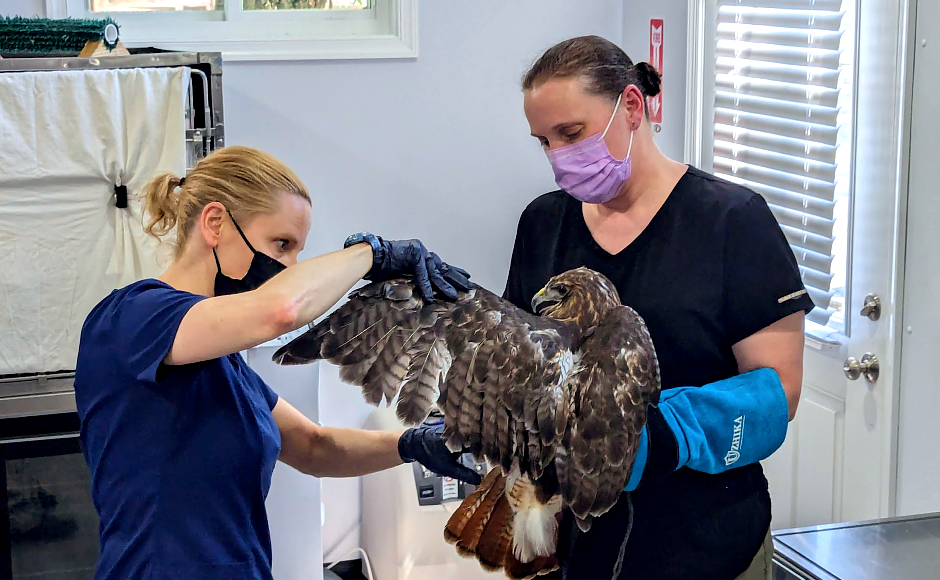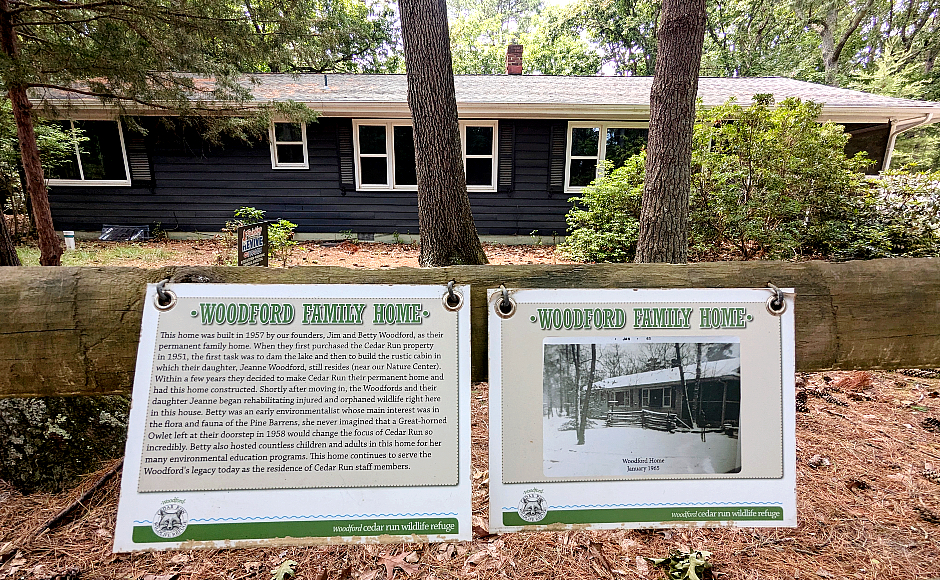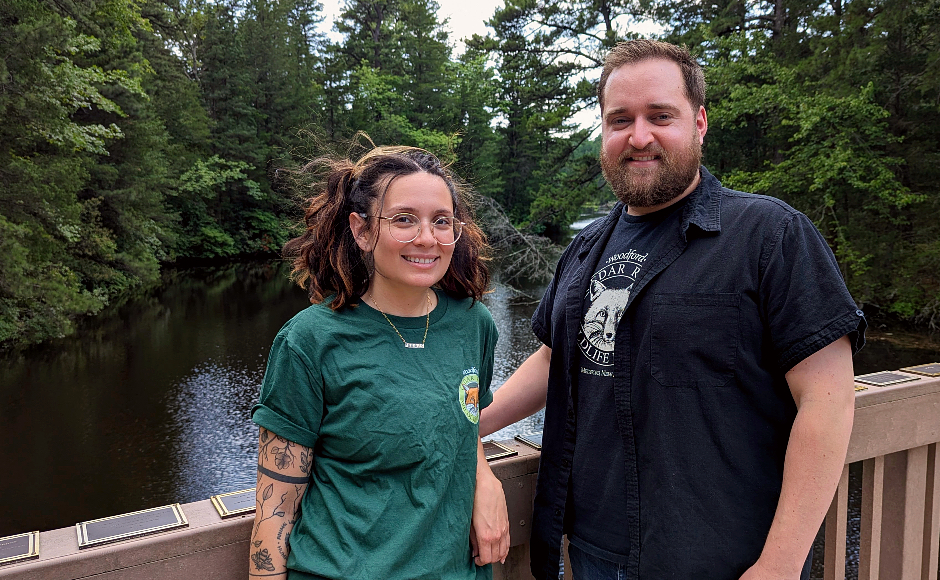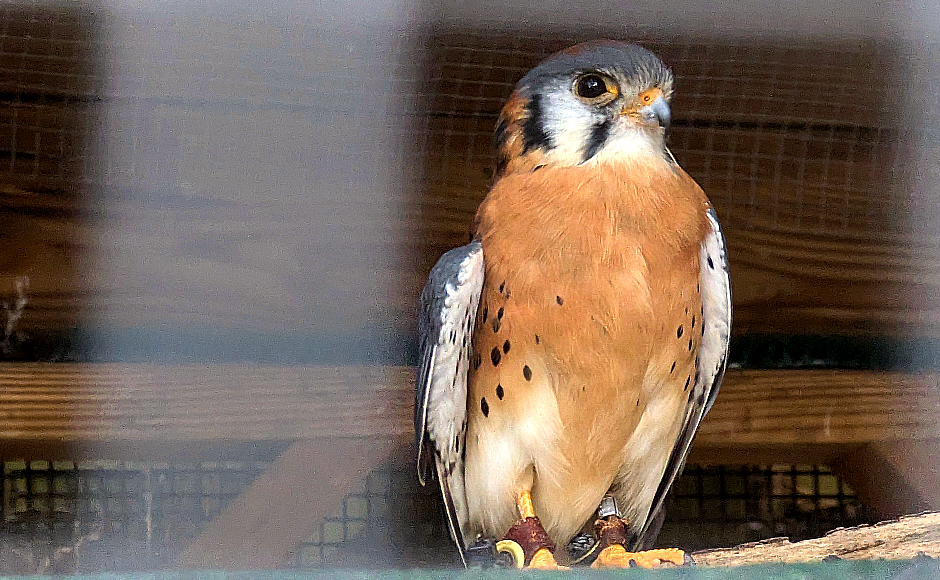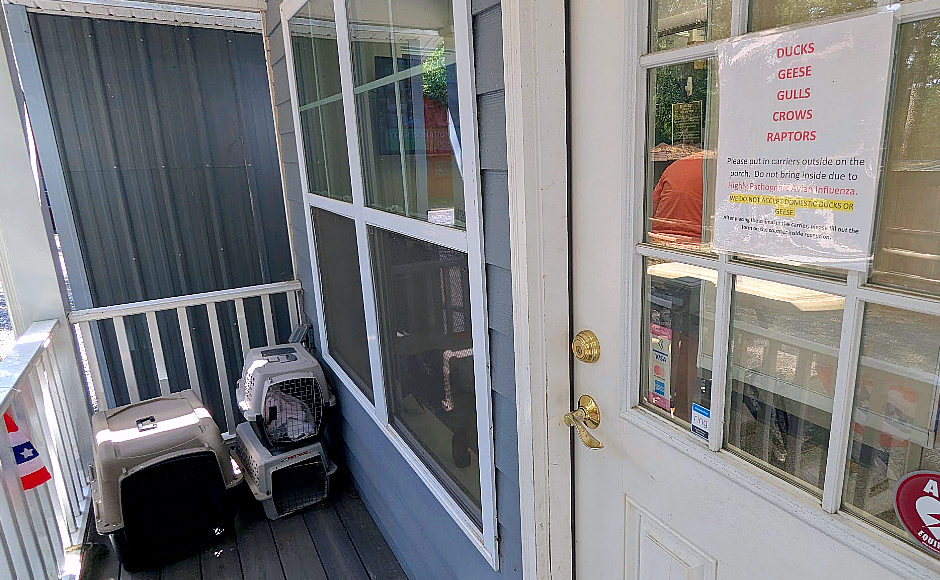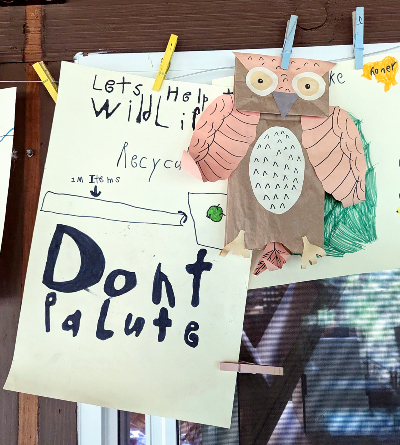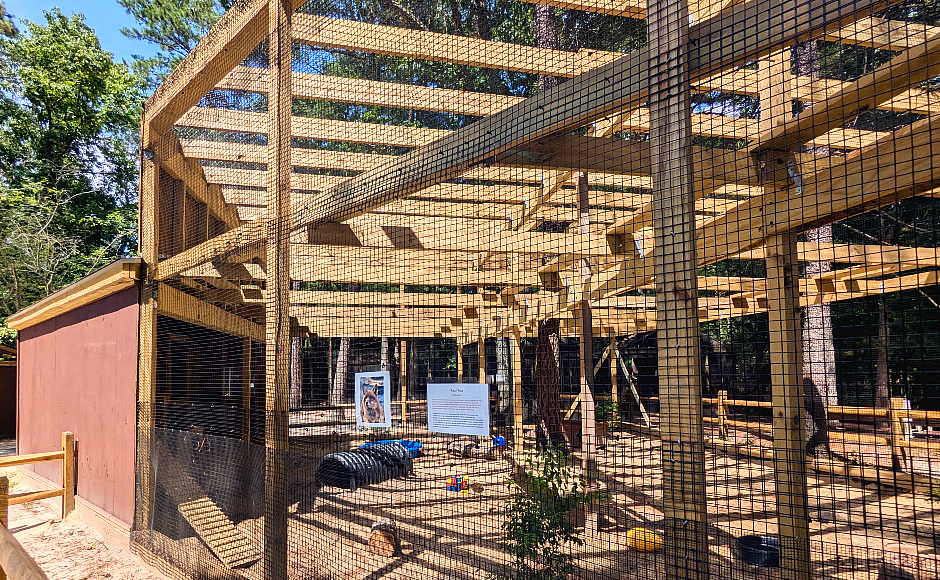There are fewer than 20 places in New Jersey that are licensed to care for sick and injured wildlife. Woodford Cedar Run, which serves about a quarter of all cases in the state, faces growing demands on its limited resources.
By Matt Skoufalos | July 1, 2024
In 1951, Jim and Betty Woodford purchased 185 acres of Medford pinelands, intending to build a summer cabin surrounded by the nature they so loved.
Six years later, in 1957, they decided to make that tract, dubbed Cedar Run, their permanent home.
That same year, one of their friends found an orphaned great horned owl, and Betty Woodford took it into her garage.
That animal was the first of thousands to pass into their care.
By 1986, the Woodfords had outgrown the garage, and constructed a purpose-built wildlife hospital capable of taking on 400 to 500 cases per year.
In 2023, that same facility saw 6,283 animals — more than a quarter of all wildlife cases in the state.
Today, the Woodford Cedar Run Wildlife Refuge comprises 171 acres of New Jersey Green Acres preserved wilderness bordering both the Rancocas Conservancy and Wharton State Forest. It includes a nature education center, three miles of hiking trails, and a nonprofit with a three-part mission: wildlife rehabilitation, habitat conservation, and environmental education.
As a nonprofit, Woodford Cedar Run is run as lean as is responsibly possible, Executive Director Mike O’Malley said, with just 12 full-time staffers. The bulk of its $1.5-million operating budget is principally supported by individual, small donations and thousands of hours of work from some 200 unpaid volunteers.
The facility receives the bulk of its financial donations at the end of the calendar year; however, the needs of the animals for which it cares may spike during the warmer months, which can strain its resources.
“Food, medications, electricity, gasoline in our vehicles — we’re not immune to the increases in costs,” O’Malley said.
“This time of year, our resources run thin,” he said.
“We have injured adults and orphaned wildlife.
“They’re operating [the medical clinic] a minimum of 12 hours a day, and typically more.”
Moreover, Woodford Cedar Run is seeing more patients every year, with 2024 case numbers already running at a 33-percent year-over-year increase, Lisa Franco, Assistant Director of Development and Communications at Woodford Cedar Run said.
The average contribution to Woodford Cedar Run is around $16, which falls far short of the $86 average cost of care per animal. Finding ways to close that $70-per-rescue shortfall is an ongoing challenge.
“A lot of people don’t realize that we’re not a state park, so we’re not federally or state funded,” Franco said. “Individual donations are the most impactful for us in doing the work that we need to do.”
Some animals require lengthy care before they can be released safely.
A fawn can require 12 weeks of close attention; one red-tailed hawk that was burned by a methane fire at a landfill spent a year re-growing its feathers.
Still others need care to overcome diseases like mange, which is driven by scabies mites, and Highly Pathogenic Avian Influenza (HPAI), which, despite not normally sickening humans, can be transmitted by mammals to other birds as well.
“If we were to have it onsite, it would be fatal to the birds of prey,” Franco said.
In other cases, the effects of climate change are driving earlier birthing seasons for animals like raccoons, ducks, and squirrels at a time when the donations needed to care for them aren’t coming in.
The majority of animals received at the center are there because of the effects of human behavior, whether having been hit by a vehicle, kept or abandoned as a pet, or displaced by environmental encroachment.
Those concerns motivate the community educators at Woodford Cedar Run to help teach the general public about how best to care for injured wildlife — including, often enough, leaving things alone.
“We want the public to call us,” Franco said. “We don’t want to take anything from the wild that is doing perfectly fine.
“A good Samaritan, with the proper education of even just knowing that we exist — that we are here as a free resource, that we can help this wildlife when they’re orphaned or injured — can make a difference,” she said.
“So many people feel that the problems are so big and vast that they can’t do anything about it,” O’Malley added.
“What you can control, what you can have a big impact on, is your local environment, and the most hands-on way that people can support our local environment is supporting the wildlife hospital,” he said.
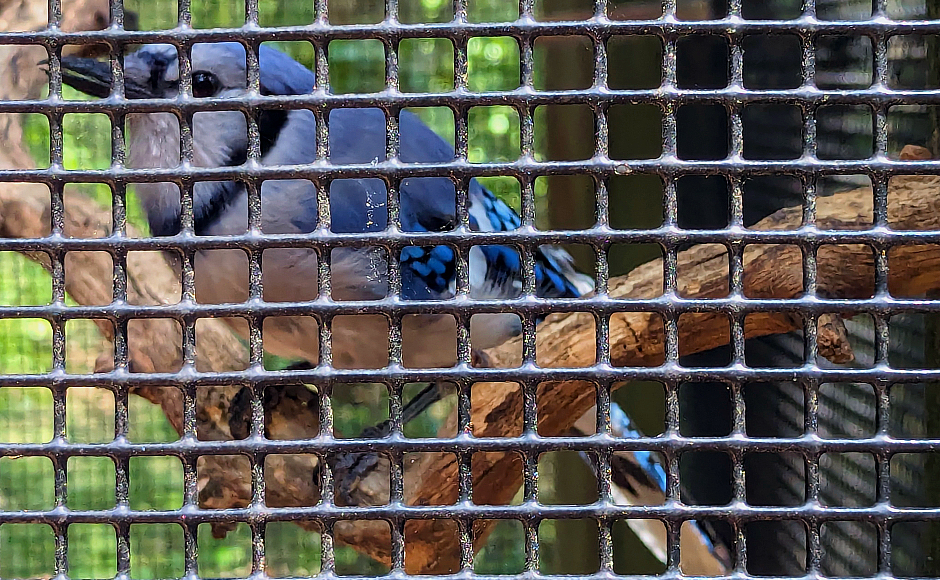
Blueberry the Blue Jay in his enclosure at Woodford Cedar Run Wildlife Preserve. Credit: Matt Skoufalos.
“You’re allowing us to provide that direct hands on care,” O’Malley said. “It makes your concern actionable.”
Although Woodford Cedar Run is located in Burlington County, O’Malley said animal drop-offs from Camden County communities rank second on its intake list.
(Camden County is not home to a licensed wildlife rehabilitator, of which there are only 18 in the state.)
The hospital can care for 500 animals at a time; as of mid-June, its patient count was around 430.
“In total, we see over 6,000 animals, and we’re one of the only resources in South Jersey that’s able to do the work that we do,” O’Malley said. “We see 158 species, and have to be permitted to do that.”
Some veterinary professionals, like those at the Animal and Bird Health Care Center in Cherry Hill, donate their hours to Woodford Cedar Run to help with clinical care.
Whereas a veterinary office typically cares for domestic animals, however, wildlife rehabilitation staff must command a diverse knowledge of species-specific animal identification, husbandry, and care.
“Our goal with every case is to try to get the animal back out into the wild and give them the best chance of survival,” O’Malley said.
That work can include creating new foster family units from orphaned baby animals, like squirrels, and rehabilitating them as a group.
Once they’re healthy enough to live on their own, they are typically released either in the areas from which they originally were delivered, or in some other open places in South Jersey.
Haddon Township resident Luke Ogden, who frequently delivers sick or orphaned animals to licensed wildlife rehabilitation centers, said that places like Woodford Cedar Run provide an invaluable local resource that supplements the efforts of overworked animal control officers.
Odgen’s own fox rescue, An Itch in Time, delivered nearly 40 foxes suffering from mange to the center last year.
“People are so quick to instantly panic about wildlife, especially baby birds and baby rabbits on their lawns,” Ogden said. “Observe and educate: ask questions, do some quick research.
“We’ve got to do better as individuals, and as towns, to have a system set up,” he said.
“Cedar Run’s a valuable resource, and we need to use it properly.
“We’re creating a more hazardous situation by bringing them everything under the sun,” Ogden said.
Onsite, Woodford Cedar Run runs day camps all summer, and offers self-guided hiking tours of the grounds.
Staff monitor trail cameras on the property to gauge the health of the animal family units there, including foxes, deer, raccoons, squirrels, vultures, mink — even a beaver that they named Kevin.
Offsite programming includes appearances by Woodford Cedar Run staff, volunteers, and “wildlife ambassadors” — those animals who are non-releasable due to permanent injury or having been imprinted or habituated to humans in a way that would imperil their survival.
Long-term residents at the facility include several birds, like Comet the kestrel, Crogan the crow, and Blueberry the blue jay. There’s Luna the barred owl, Hoodini the great horned owl, Socrates the turkey vulture, Ursula the black vulture, and Jesse, the red-tailed hawk.
Visitors can experience the ambassadors in their enclosures on the grounds, but the animals require constant attention, as do their habitats.
A major campaign to build an enclosure for Ember the red fox, who was permanently injured as a kit, hit its goal in January 2023.
Today she enjoys a new, $75,000 enclosure that will be her home as a permanent wildlife ambassador.
“When you get to see something, you have so much more appreciation for that animal, and that is the education piece we do to try to instill about why it’s important to protect them,” Franco said.
To that end, Woodford Cedar Run wildlife ambassadors will make appearances at its annual benefit event, “Wine & Wildlife,” at the Community House of Moorestown on July 13.
This year’s theme, “One Health,” celebrates the interconnectedness of life, and celebrates the role that humans play in it.
“It’s not like we’re not meant to be here, because we are,” Franco said. “The more we do together, our environment will get better.”
For more information about Woodford Cedar Run Wildlife Refuge, visit Cedarrun.org.

